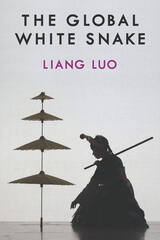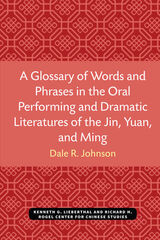218 books about Chinese and 4
start with G
218 books about Chinese and 4
218 books about Chinese
4 start with G start with G
4 start with G start with G

Geo-Narratives of a Filial Son
The Paintings and Travel Diaries of Huang Xiangjian (1609–1673)
Elizabeth Kindall
Harvard University Press, 2016
Huang Xiangjian, a mid-seventeenth-century member of the Suzhou local elite, journeyed on foot to southwest China and recorded its sublime scenery in site-specific paintings. Elizabeth Kindall’s innovative analysis of the visual experiences and social functions Huang conveyed through his oeuvre reveals an unrecognized tradition of site paintings, here labeled geo-narratives, that recount specific journeys and create meaning in the paintings. Kindall shows how Huang created these geo-narratives by drawing upon the Suzhou place-painting tradition, as well as the encoded experiences of southwestern sites discussed in historical gazetteers and personal travel records, and the geography of the sites themselves. Ultimately these works were intended to create personas and fulfill specific social purposes among the educated class during the Ming-Qing transition. Some of Huang’s paintings of the southwest, together with his travel records, became part of a campaign to attain the socially generated title of Filial Son, whereas others served private functions. This definitive study elucidates the context for Huang Xiangjian’s painting and identifies geo-narrative as a distinct landscape-painting tradition lauded for its naturalistic immediacy, experiential topography, and dramatic narratives of moral persuasion, class identification, and biographical commemoration.
[more]

Getting Around in Chinese
Chinese Skits for Beginners
Hilda H. Tao
University of Michigan Press, 2000
This video-and-text teaching program focuses on building the practical spoken skills of beginning students. The video, produced by the Language Resource Center at the University of Michigan, features thirty skits that cover a wide range of daily activities such as introducing yourself, inviting a friend to the movies, asking for directions, talking about your family, and shopping. The skits provide a model for students to learn and then improvise on. Each segment introduces new vocabulary and reviews grammatical structures. Excellent for improving pronunciation, tones, and listening comprehension, as well as providing an opportunity for beginning students to learn Chinese body language and gestures. The accompanying textbook includes the dialogues in English and pinyin along with character text in both simplified and traditional characters, vocabulary lists with sample sentences to clarify proper use of key expressions, and discussion questions.
[more]

The Global White Snake
Liang Luo
University of Michigan Press, 2021
The Global White Snake examines the Chinese White Snake legends and their extensive, multidirectional travels within Asia and across the globe. Such travels across linguistic and cultural boundaries have generated distinctive traditions as the White Snake has been reinvented in the Chinese, Japanese, Korean, and English-speaking worlds, among others. Moreover, the inter-Asian voyages and global circulations of the White Snake legends have enabled them to become repositories of diverse and complex meanings for a great number of people, serving as reservoirs for polyphonic expressions ranging from the attempts to consolidate authoritarian power to the celebrations of minority rights and activism.
The Global White Snake uncovers how the White Snake legend often acts as an unsettling narrative of radical tolerance for hybrid sexualities, loving across traditional boundaries, subverting authority, and valuing the strange and the uncanny. A timely mediation and reflection on our contemporary moment of continued struggle for minority rights and social justice, The Global White Snake revives the radical anti-authoritarian spirit slithering under the tales of monsters and demons, love and lust, and reminds us of the power of the fantastic and the fabulous in inspiring and empowering personal and social transformations.
The Global White Snake uncovers how the White Snake legend often acts as an unsettling narrative of radical tolerance for hybrid sexualities, loving across traditional boundaries, subverting authority, and valuing the strange and the uncanny. A timely mediation and reflection on our contemporary moment of continued struggle for minority rights and social justice, The Global White Snake revives the radical anti-authoritarian spirit slithering under the tales of monsters and demons, love and lust, and reminds us of the power of the fantastic and the fabulous in inspiring and empowering personal and social transformations.
[more]

A Glossary of Words and Phrases in the Oral Performing and Dramatic Literatures of the Jin, Yuan, and Ming
Dale R. Johnson
University of Michigan Press, 2002
For many years, the oral performing and dramatic literatures of China from 1200 to 1600 CE were considered some of the most difficult texts in the Chinese corpus. They included ballad medleys, comic farces, Yuan music dramas, Ming music dramas, and the novel Shuihu zhuan. The Japanese scholars who first dedicated themselves to study these works in the mid-twentieth century were considered daring. As late as 1981, no comprehensive dictionary or glossary for this literature existed in any language, Asian or Western.
A Glossary of Words and Phrases fills this gap for Western readers, allowing even a relative novice who has resonable command of Chinese to read, translate, and appreciate this great body of literature with an ease undreamed of even two decades ago. The Glossary is organized into approximately 8,000 entries based on the reading notes and glosses found in various dictionaries, thesauruses, glossaries, and editions of works from the period. Main entries are listed alphabetically in the pinyin romanization system. In addition to glosses, entries include symbolic annotations, guides to pronunciation, and text citations. The result is a broadly useful glossary serving the needs of students of this literature as well as scholars researching Jin and Yuan language and its usage.
[more]
READERS
Browse our collection.
PUBLISHERS
See BiblioVault's publisher services.
STUDENT SERVICES
Files for college accessibility offices.
UChicago Accessibility Resources
home | accessibility | search | about | contact us
BiblioVault ® 2001 - 2024
The University of Chicago Press









